| Year | Population |
|---|---|
| 1970 | 1,681 |
| 1980 | 3,081 |
| 1990 | 3,696 |
| 2000 | 4,486 |
| 2010 | 4,876 |
| Geographic Data | |
|---|---|
| N. Latitude | 44:05:23 |
| W. Longitude | 70:04:13 |
| Maine House | District 57 |
| Maine Senate | District 22 |
| Congress | District 2 |
| Area sq. mi. | (total) 26.8 |
| Area sq. mi. | (land) 25.6 |
| Population/sq.mi | (land) 190.5 |
County: Androscoggin
Total=land+water; Land=land only |
|
Remnants of a dam and power generation equipment at right recall days when several mills thrived in the town. The Webster Rubber Company building was a museum but is now apparently vacant.
[sa-BAHT-iss] is a town in Androscoggin County, settled in 1774 and incorporated on March 7, 1840 as the Town of Webster. During the 19th century, it swapped land with Lisbon and Lewiston, and annexed land from Wales and Greene. In 1971 Webster, named for the famous statesman and orator Daniel Webster, became Sabattus.
The name is that of a Native American chief of the Anasagunticook tribe who was killed in a battle in the area by, according to some, a Captain Church.
Located just east of Lewiston, most of the town’s population appears on a map as an extension of that City, so closely are they located.
That portion of the town at the south end of Sabattus Pond is part of the urban center. Uncle Moe’s Diner, in this area, is a well-known for its breakfast fare.
Just to the east, the landscape quickly changes to open space and farmland. Following the efforts of Governor John Hubbard, and the leadership of Neal Dow, liquor laws in Maine were again tightened in 1871 when the sale of wine and cider was prohibited. During this period, the Sabattus Temperance Union was organized on October 25, 1877.
According to the 1886 Maine Gazetteer by George Varney:
At Sabattusville near the pond are two woolen-factories, an excelsior-mill, and two lumber-mills. The first mill at this point appears to have been the saw and grist mill built by Robert H. Niles and Robert Ross above eighty years ago. These were rebuilt in 1844, by Messrs. Lombard and Watts.
Sabattusville is the only village, except a small cluster of houses at Webster Post-Office, in the southern part of the town. The Androscoggin division of the Maine Central Railroad runs through Sabattusville and along the pond at the north-western angle of the town. The surface of the country is much varied by hills and valleys, but there are no lofty eminences. Robinson and Hedgehog “mountains” and Pettengill, Jordan and Oak hills are the chief of these. The last, continuing southward, takes the name of Lisbon Ridge. At the centre of the town is Sutherland’s Pond; a mile north-east is Loon Pond, followed in range by Curtis Bog. Ross Brook, drawing its supplies principally from these ponds, is the principal tributary of the Sabattus River. About half a mile south of Sabattus Pond, in a hollow in a high plateau or broad “horse-hack” is a small body of clear water which has no apparent outlet; but the nature of the soil of the plateau in large part sand and coarse gravel and the swamp at a lower altitude than the pond, and yet higher than the neighboring Sabattus Pond, show the manner of the water escape. In the days of superstitious mysteries and geological, ignorance this quiet little sheet of water bore the discreditable name of “The Devil’s Washbowl.”
Jilson’s Farm on the Jordan Bridge Road draws huge crowds for Maine’s Maple Sunday open house visits.
Form of Government: Town Meeting-Select Board-Manager.
Additional resources [Click on images to enlarge and clarify]
Knights of Pythias. Lake Sabattus Lodge No. 95 (Sabattus, Me.) Official Record Book, 1905-1909.
Sabattus Temperance Union (Sabattus, Me.) Records, 1877-1920. [University of Maine, Raymond H. Fogler Library, Special Collections]
**Town of Sabattus. “Sabattus’ Vision for the Future.” June 1, 2013. https://www1.maine.gov/dacf/municipalplanning/comp_plans/Sabattus_2013.pdf (accessed March 7, 2017)
*United States. Department of the Interior. National Park Service. “Webster Rubber Company Plant.” https://npgallery.nps.gov/pdfhost/docs/nrhp/text/89001701.PDF (accessed March 7, 2017)
Varney, George J. A Gazetteer of the State of Maine. 1886. pp. 574-575.
National Register of Historic Places – Listings
Webster Rubber Company Plant
[Greene Street] The Webster Rubber Company Plant in Sabattus was a small-scale manufacturing enterprise whose buildings date from between 1869 and the mid-20th century. Originally designed as a woolen mill, the plant was converted in 1922 to the production of rubber parts for shoes.
The availability of water power at Sabattus Village made it a natural choice for the establishment of sawmills and gristmills. These first mills gave way to a pair of large woolen textile mills established by Luther Lombard and Retiah D. Jones. Their first facility, later known as Mill No. 1, was built in 1860 on the site of one of the old sawmills. The Rubber Company, known as Mill No. 1 1/2, was built nine years later.
In 1870 the plant had 30 employees producing 7,000 yards of wool repellants annually. By 1872 Mill No. 1 had become the Webster Woolen Company The woolen mills dominated the local economy during the late 19th and early 20th centuries. Mill No. 1 1/2, for example, employed about 100 persons in the early 1890s, sustaining the many small commercial enterprises that had developed to serve the community. In 1922 Mill No. 1 1/2 was acquired by the Pine Tree State Rubber Heal Company, shifting to the production of rubber shoe parts. This was in keeping with a long established manufacturing trend in the Lewiston-Auburn area, a trend such that by the early 1920s Auburn was the nation’s fifth largest shoe manufacturing center.*
In 2002 it was the “Show Me Museum.” In 2011, the town acquired the property through a tax lien. The 2013 Sabattus Comprehensive Plan envisions “the reuse of the Webster Rubber property” in its “Vision for the future.”**


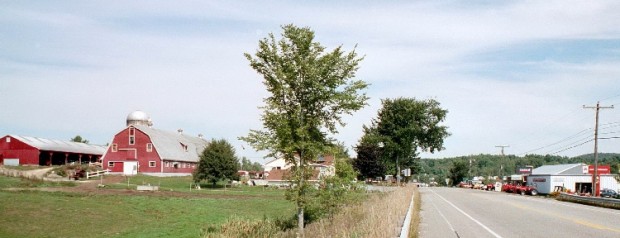
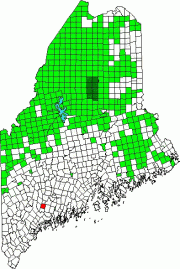

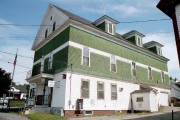
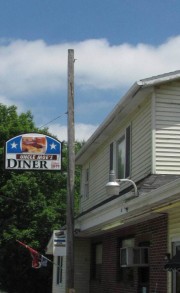
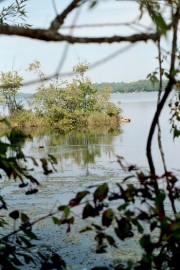
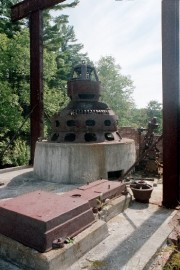
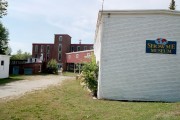
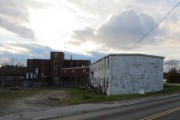




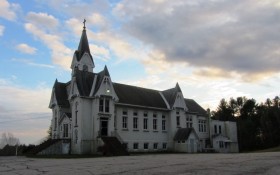
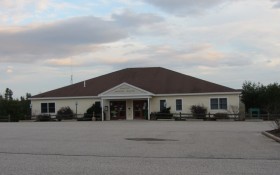
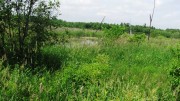

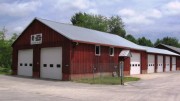

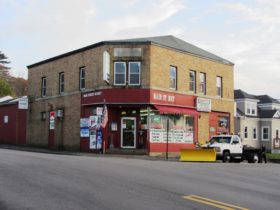


Hello
I am doing research on the Klondike Mill in Sabattus. It burned in 1981. I am looking for photos of the building before it burned? The mill was original built by Robert Niles in the 1820s and rebuilt by John Lombard and Samuel Watts. They bought the mill in 1844. In 1891 it became part of the Webster Woolen Company who owned two other mills on the Sabattus River. The company was reorganized in the 1920s and became the Webster Rubber Company. Who was operating the museum in the Webster Rubber Company building?
thanks,
Hello Rick, I have been doing research on Sabattus and have some photos compiled that I have found in my research. I have a picture of the Mill, what’s your email address so I can send it to you? it’s a little blurry, but It’s the only picture I have come across.
Can someone please reply and let me know where I can find an article on Sabattus pond being a man-made pond.I am engrossed in a little friendly disagreement with a co-worker who says she grew up in Sabattus and seems to think that she knows the history of the town.